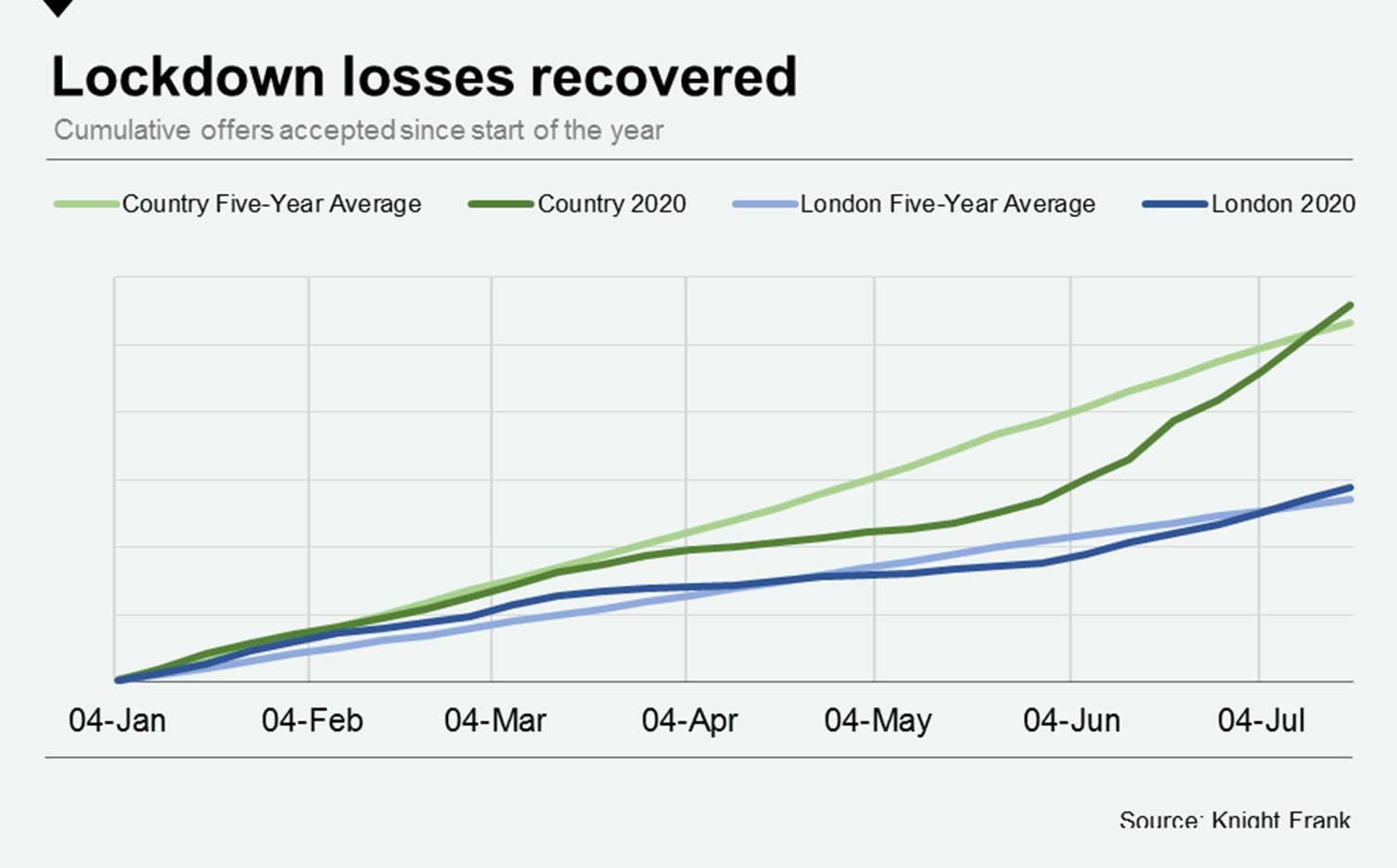UK Residential Market Update: August 2020
Prices and transaction numbers rise from April’s low point.
3 minutes to read
UK prices and transaction numbers have begun to recover from the depths of the lockdown in April.
Halifax said prices had bounced back to their highest ever level thanks to a mini-boom since lockdown, which saw annual price growth up 3.8% in July compared with the same month in 2019. Nationwide also reported a comeback, with annual house price growth at 1.5% in July, having fallen by 0.1% in June.
July's UK Residential Market Survey from RICS reported that house prices were out of negative territory for the first time since March, with a net balance of 12% of survey respondents reporting an increase in house prices (compared to -13% in June).
Prices in prime London markets are behaving in a similar way. Areas including Wandsworth, Richmond, Dulwich and Islington recorded monthly increases in July as they benefitted from a surge in demand from families seeking more outdoor space. In prime outer London, the average monthly rise was 0.2%.
The trend was less marked in prime central where international travel restrictions have curbed activity levels. Average prices fell 0.1% in July, taking the quarterly fall to 1.7%.
Meanwhile, prices outside of London have been more resilient since the market re-opened in mid-May as buyers looked for more space. Values rose in the £5 million-plus country house market due to the lack of supply and the ability of buyers in higher price brackets to transact quickly.
In terms of transactions, UK property sales in June were 36% lower than the same period in 2019 but close to a third (32%) up on the month before.
The 63,250 residential property transactions in June compared with 48,450 in May, the point at which transactions increased again having bottomed out in April.
In the week ending 18 July, the number of UK exchanges was 18% below the five-year average, Knight Frank data shows. That compares to an equivalent decline of 42% in mid-June.
Meanwhile, mortgage approvals more than quadrupled in June reaching 40,010 from May's record low of 9,273, the latest Bank of England (BoE) data shows.
The figure for June is 36% lower than 12 months ago, but the decline is narrower than in May, which was 50% lower than May 2019. The BoE has left interest rates on hold at 0.1% and warned UK economic activity will take longer to recover than first thought, with GDP not expected to exceed pre-pandemic levels until the end of 2021.
Exchanges taking longer
Despite this, exchanges are taking longer due to staffing shortages at lenders and conveyancing solicitors as well as tighter lending conditions.
Furthermore, the cumulative number of offers accepted in the UK since the start of the year is now above the five-year average, as the chart below shows.

The Stamp Duty Land Tax (SDLT) holiday introduced for properties in England and Northern Ireland on 8 July has driven activity, especially for properties valued at £1.5m and below.
Since the SDLT holiday was introduced, the number of offers agreed on sub-£1.5m UK properties rose 146% compared to the 5-year average. For properties over £1.5m, the rise was 71%.
Scotland and Wales, which have different property sales tax systems, have also introduced their own tax holidays, all of which will remain in force until 1 April 2021.
While property market indicators remain strong, what remains uncertain is how long current levels of activity will last. Two primary risks are a second wave of Covid-19 and the impact from the government withdrawing the furlough scheme. Large UK companies are starting to announce redundancies.
The number of employees in the UK was down around 650,000 compared with March 2020, according to July’s Labour Market Overview. Meanwhile, vacancies in the UK in April to June 2020 are at the lowest level since the Vacancy Survey, at an estimated 333,000.